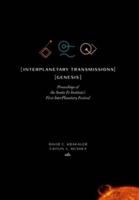Publisher's Synopsis
This paper presents experimental results for the liquid hydrogen bubble point tests using warm pressurant gases conducted at the Cryogenic Components Cell 7 facility at the NASA Glenn Research Center in Cleveland, Ohio. The purpose of the test series was to determine the effect of elevating the temperature of the pressurant gas on the performance of a liquid acquisition device. Three fine mesh screen samples (325 x 2300, 450 x 2750, 510 x 3600) were tested in liquid hydrogen using cold and warm noncondensible (gaseous helium) and condensable (gaseous hydrogen) pressurization schemes. Gases were conditioned from 0 to 90 K above the liquid temperature. Results clearly indicate a degradation in bubble point pressure using warm gas, with a greater reduction in performance using condensable over noncondensible pressurization. Degradation in the bubble point pressure is inversely proportional to screen porosity, as the coarsest mesh demonstrated the highest degradation. Results here have implication on both pressurization and LAD system design for all future cryogenic propulsion systems. A detailed review of historical heated gas tests is also presented for comparison to current results. Hartwig, Jason W. and McQuillen, John B. and Chato, David J. Glenn Research Center NASA/TM-2013-216569, AIAA Paper 2013-3982, E-10057, GRC-E-DAA-TN10057












